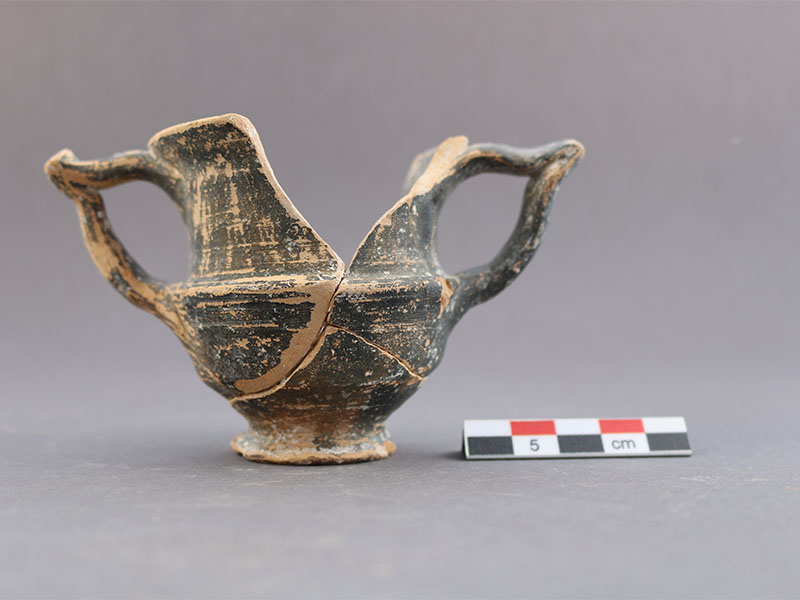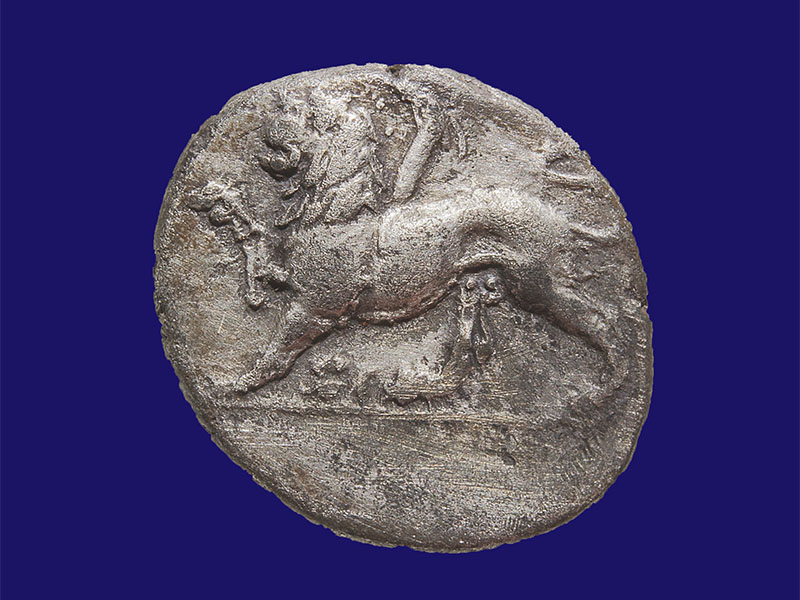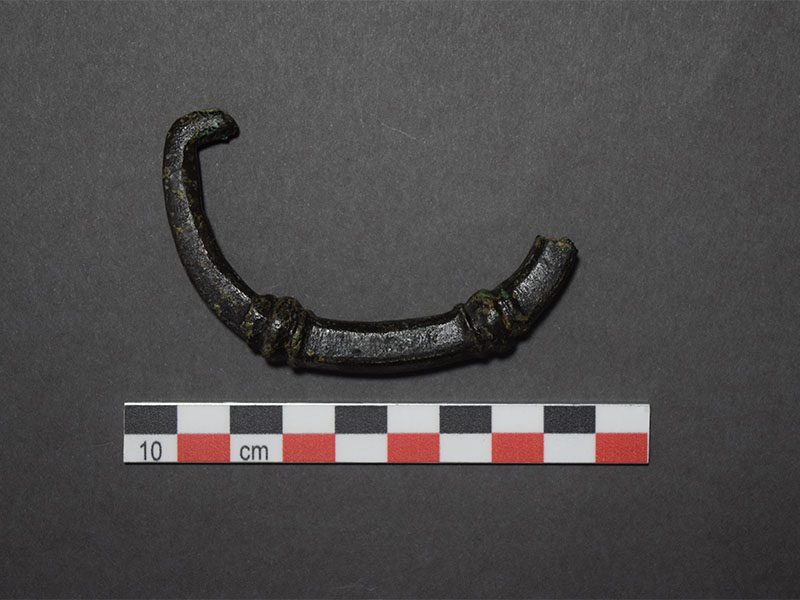(first study season)

The first study season of the Onchestos Excavation Project was conducted from June 4 to July 14, 2018. At the beginning of the six-week season, the team focused on cataloging the pottery found in the trenches of the so-called Annex at Site A. This work involved counting, photographing, and writing detailed descriptions of each assemblage, noting joins, decoration, and fabric, identifying vessel forms, and studying other important features such as sherds inscribed with “H” or “HI” presumably abbreviations of hieron. Several fragments were found to feature Hellenistic period characteristics of ceramic decoration and manufacture such as rouletting, stamping, and mold-made relief. The team also began cataloging the finds from the 2014-2017 excavation campaigns at Site A and Site B. The finds include over six hundred metal and stone objects, over three hundred architectural terracottas, numerous coins, and fragments of bone, glass, and terracotta. Our cataloging efforts involved studying the notebook entries and trench plans, taking accurate measurements, and writing detailed descriptions of each find.
Among the particularly rich metal finds from Site A, the team identified jewelry, hardware, equestrian paraphernalia, and various implements of cult such as knives, swords, and obeloi. From Site B, the team studied numerous fragments of column shafts and capitals of the Ionic order, which will aid in the architectural reconstruction of the circular structure. The team was also able to identify mason’s marks and joins among the rich corpus of architectural terracottas from Site B. Among the best preserved are sima fragments and a combination of eaves tile and antefix with vibrant painted decoration. The good state of preservation of many of the coins from both sites allowed the team to recognize their origins at a range of places including Sikyon, Chalkis, Thespiai, Phlious, and Macedonia, among other Late-Classical and Hellenistic period mints.


During the 2018 study season, the team also began to catalog and photograph over one hundred metal finds from the 1972 Greek rescue excavations at Site A, including hardware and fragments of knives and vessels. Kiki Karagianni focused on conserving the 1972 metal finds to prevent deterioration and identified joins among the ceramic finds from the rescue excavations.
